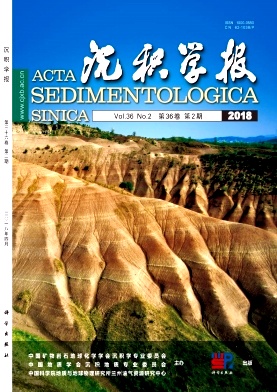Evolution of Climate Recorded by Sensitive Grain-Size Components of Dahu Swamp Since 16ka, Nanling Mountains, South China
doi: 10.14027/j.issn.1000-0550.2018.035
- Received Date: 2016-11-14
- Rev Recd Date: 2017-07-05
- Publish Date: 2018-04-10
-
Key words:
- Dahu swamp /
- Late Glacial /
- sensitive grain-size /
- climatic and environmental changes
Abstract: The content and distribution of Dahu swamp Core granularity extracted from Mastersizer 2000 were analyzed based on standard deviation change. Three environmental sensitive grain-size components:0.6-7.1 μm (C1), 20-44.8 μm (C2) and 89.3-447.7 μm (C3) of its sediments at the depth of 348 cm were identified by the mathematical method of grain-size classes and standard deviation values. Combined with the distribution characteristic of sediment and the results of radiocarbon dating, we select C2 as an index to establish a sequence of 16 000 years of climate change in the Dahu swamp Core. During the period of 16.0-11.5 ka B.P., sensitive component of the overall content is low, the climate and environment of the studied area was relatively dry. During the period of 11.5-6.0 ka B.P., sensitive component of the overall content is low and the climate is wet. During the period of 6.0-3.8 ka B.P., the climate became dry, and sensitive grain-size group content increased. From 3.8 ka B.P. to now, the content of sensitive particle fraction is generally low. Considering the anthropogenic interference factors, this paper does not discuss in detail. The study found that the climate was very unstable through reconstructing the paleoclimate of Dahu lake-swamp area since the Late Glacial. In addition, we can draw a conclusion that climate change of Dahu lake-swamp is global by contrast to the GISP2 ice core climate records and D4 stalagmite in Dongge cave. And we find that the climate change in the study area may be related to solar activity.
| Citation: | SHANG ShengTan, ZHONG Wei, WEI ZhiQiang, ZHU Chan, XUE JiBin. Evolution of Climate Recorded by Sensitive Grain-Size Components of Dahu Swamp Since 16ka, Nanling Mountains, South China[J]. Acta Sedimentologica Sinica, 2018, 36(2): 310-318. doi: 10.14027/j.issn.1000-0550.2018.035 |






 DownLoad:
DownLoad: